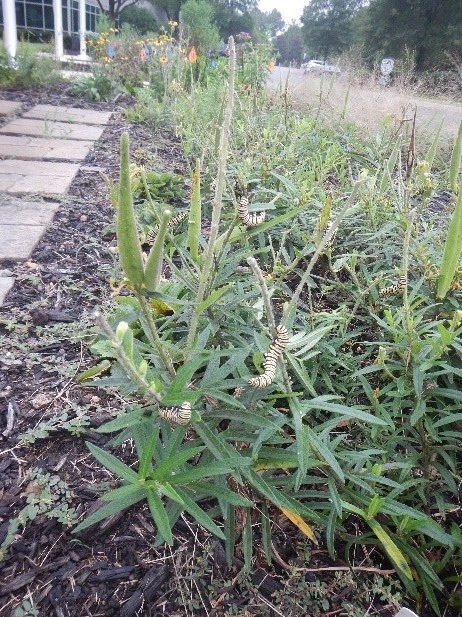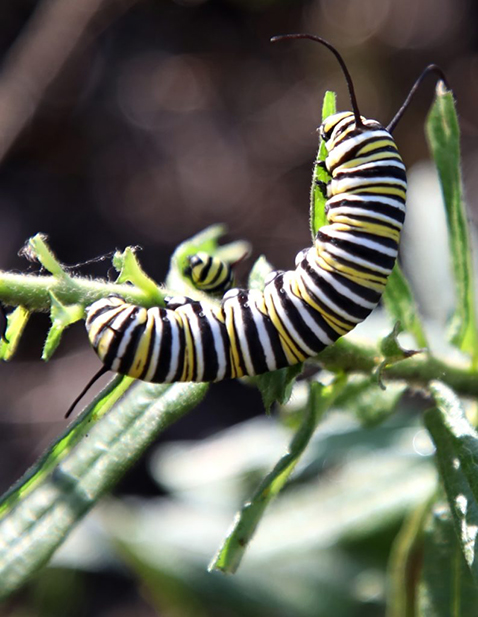By Carol A. Heiser, Habitat Education Coordinator
It’s amazing what an impact a few milkweed plants can have. Here at DGIF headquarters in Henrico county, we got rid of a big patch of lawn at our entrance and have started a pollinator garden, and the monarch caterpillars have had a feast on the milkweed. A few weeks ago I took this picture of our bed of butterflyweed (Asclepias tuberosa) and counted 60 caterpillars, some very small and others quite plump and large, munching away. They spend about two weeks as a caterpillar.
- Photo by Carol Heiser.
- Photo by Lee Walker.
Ten days later, the plants were almost completely eaten and barely recognizable:

Photo by Carol Heiser.
But the beauty of this phenomenon is that we’re finding chrysalises hanging underneath the sign next to the garden bed. When a monarch caterpillar is ready to metamorphose into a butterfly, it crawls away from the plants and tries to find a place off the ground to hang upside down, where it begins the next phase of its life cycle.
Here’s a caterpillar looking for a good place under the edge of the sign:
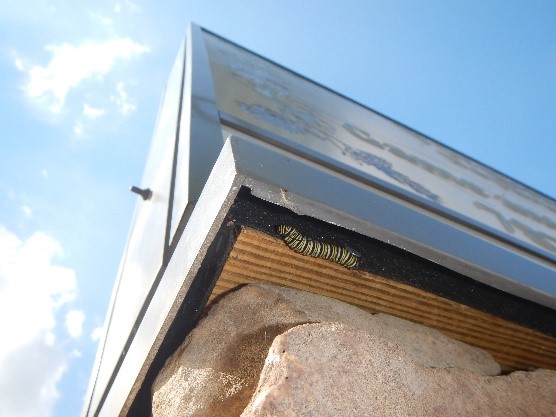
Photo by Carol Heiser.
Then the magic happens! Each caterpillar transforms into its own lime-green colored chrysalis. I counted over 25 chrysalises hanging on the stonework or under the edges of the sign on September 19th, all in different stages of development. As of October 3rd, there were 14 chrysalises on the sign. Inside the chrysalis, the butterfly takes approximately 10 days to develop before it emerges as an adult:

Photo by Carol Heiser.
Below you can see this butterfly’s body parts forming – how cool is that!
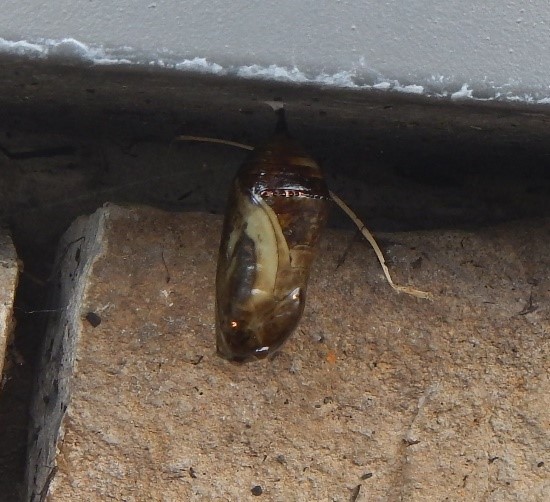
Photo by Carol Heiser.
After the butterfly emerges and flies away, all that’s left behind is the thin transparent “shell” of the chrysalis – it’s the one in the middle of the picture below:
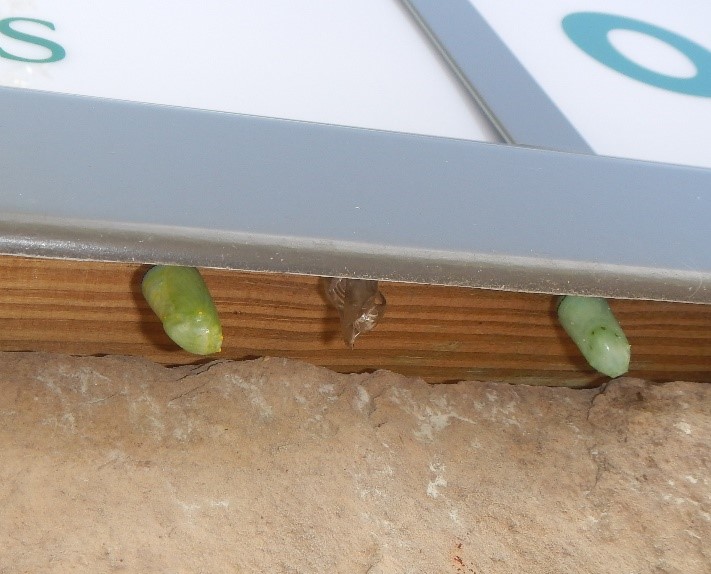
Photo by Carol Heiser.
How about in your neighborhood? Have you seen a surge of monarch butterflies and caterpillars this season? Evidence seems to show that monarch numbers are higher than usual this year, possibly the highest in almost five years.
And that’s not all that’s using our garden! Check out our mountain mint (Pycnanthemum muticum), which is attracting numerous bees, such as these bumblebees-
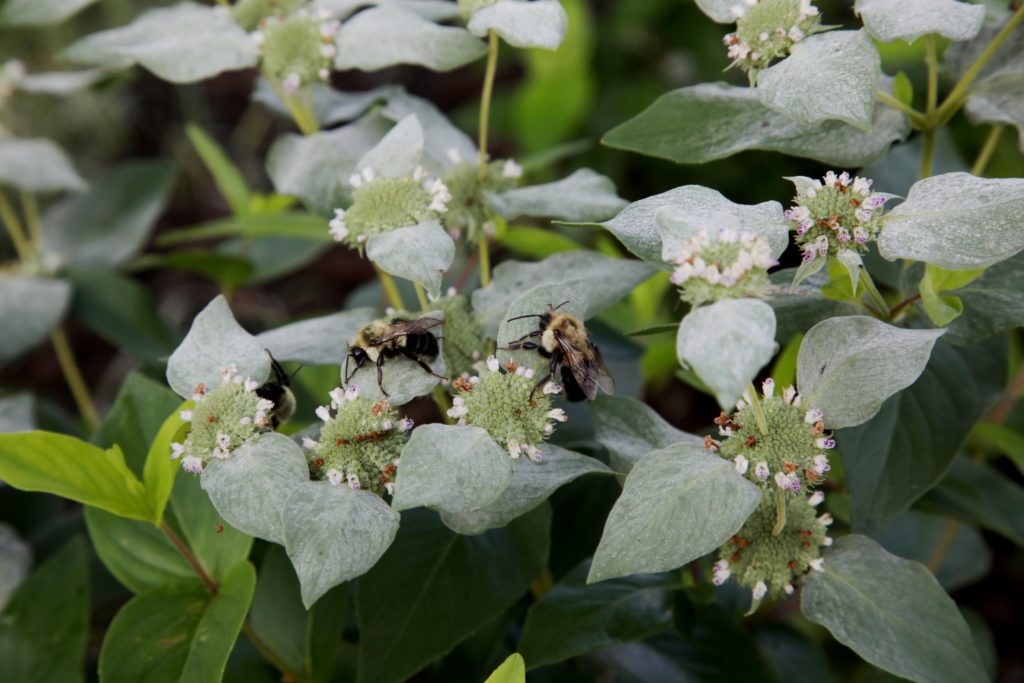
Photo by Lee Walker.
-and also butterflies, such as this common buckeye:
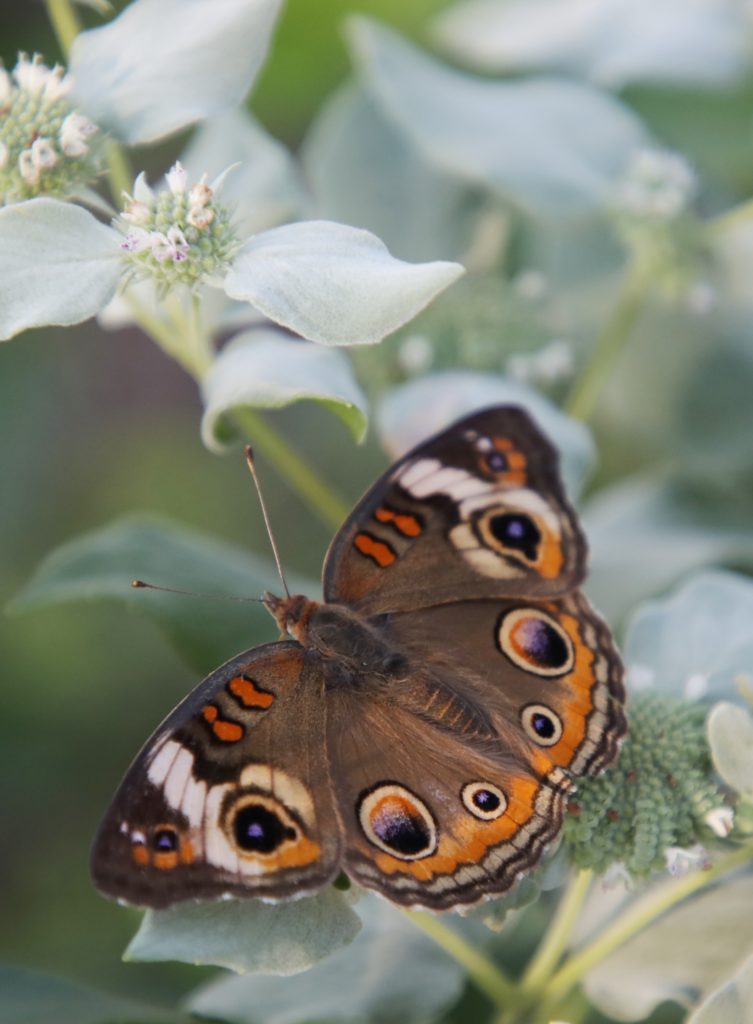
Photo by Lee Walker.
And our great blue lobelia is still blooming on October 9th – it continues to be an excellent magnet for bees:
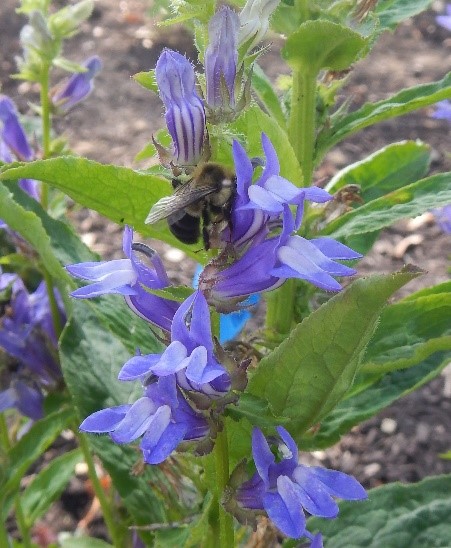
Photo by Carol Heiser.


